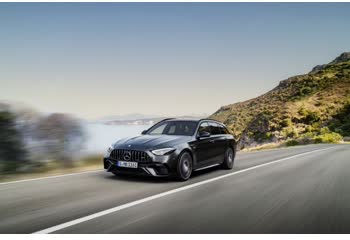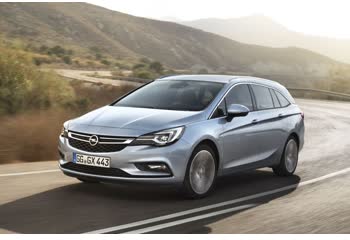Everything you need to know about specifications and performance - Mercedes-Benz C-class 2018 - C 200 (184 Hp) EQ Boost 9G-TRONIC

Overview:
What is the engine capacity of a Mercedes-Benz C-class 2018?
The engine capacity of the Mercedes-Benz C-class 2018 is 1497.
Mercedes-Benz C-class 2018 How many horsepower?
The engine power of the Mercedes-Benz C-class 2018 is 184 Hp.
What is the Mercedes-Benz C-class 2018 engine?
Mercedes-Benz C-class 2018 engine is M 264.915. (Click to see other cars using the same engine)
How much gasoline does a Mercedes-Benz C-class 2018 consume?
The Mercedes-Benz C-class 2018 consumes 6.2-6.6 liters of gasoline per 100 km
General:
Brand: Mercedes-Benz
Model: C-class
Generation: C-class T-modell (S205, facelift 2018)
Modification (Engine): C 200 (184 Hp) EQ Boost 9G-TRONIC
Start of production: 2018
End of production: 2021
Powertrain Architecture: MHEV (Mild Hybrid Electric Vehicle, power-assist hybrid, battery-assisted hybrid vehicles, BAHV)
Body type: Station wagon
Seats: 5
Doors: 5
Engine:
Engine systems: Start & Stop System
Power: 184 hp
Power per litre: 122.9 hp/l
Torque: 280 nm @ 3000-4000 rpm.
Engine Model/Code: m 264.915
Engine displacement: 1497
Number of cylinders: 4
Engine configuration: Inline
Number of valves per cylinder: 4
Fuel injection system: Direct injection
Engine aspiration: Turbocharger, Intercooler
Valvetrain: DOHC
Engine oil capacity: 6.6 l
Coolant: 8.6 l
Engine layout: Front, Longitudinal
Cylinder Bore: 80.4 mm
Piston Stroke: 73.7 mm
Compression ratio: 10.5:1
Performance:
Fuel Type: Petrol (Gasoline)
Fuel consumption (economy) - urban: 8.1-8.5 l/100 km
Fuel consumption (economy) - extra urban: 5.1-5.5 l/100 km
Fuel consumption (economy) - combined (NEDC): 6.2-6.6 l/100 km
Fuel consumption at Low speed (WLTP): 7 l/100 km
Fuel consumption at very high speed (WLTP): 8.2 l/100 km
Fuel consumption (economy) - urban (NEDC): 8.1-8.5 l/100 km
Fuel consumption (economy) - extra urban (NEDC): 5.1-5.5 l/100 km
Fuel consumption (economy) - combined: 6.2-6.6 l/100 km
Emission standard: Euro 6
Acceleration 0 - 100 km/h: 7.9 sec
Acceleration 0 - 62 mph: 7.9 sec
Maximum speed: 235 km/h
Weight-to-power ratio: 8.1 kg/Hp, 123.5 Hp/tonne
Weight-to-torque ratio: 5.3 kg/Nm, 187.9 Nm/tonne
Acceleration 0 - 60 mph: 7.5 sec
Electric system:
Electric motor power: 14 hp
Space:
Kerb Weight (kg): 1490
Max. weight (kg): 2155
Max load (kg): 665
Trunk (boot) space - maximum: 1460 l
Trunk (boot) space - minimum: 440 l
Permitted trailer load with brakes (12%): 1800 kg
Fuel tank capacity: 41 l
Permitted trailer load without brakes: 750 kg
dimensions:
Ramp-over (brakeover) angle: 8.9°
Length: 4702 mm
Width: 1810 mm
Height: 1457 mm
wheelbase: 2840 mm
Front track: 1584 mm
Front overhang: 790 mm
Rear overhang: 1072 mm
Ride height (ground clearance): 92 mm
Approach angle: 13.6°
Departure angle: 13.8°
Powertrain, Suspension and Brakes:
Drivetrain Architecture: The Internal combustion Engine (ICE) and electric motor drive the rear wheels of the car with the ability to work only in mixed mode.
Drive wheel: Rear wheel drive
Number of gears and type of gearbox: 9 gears, automatic transmission G-TRONIC
Front brakes: Ventilated discs
Rear brakes: Ventilated discs
Assisting systems: ABS (Anti-lock braking system)
Steering type: Steering rack and pinion
Power steering: Electric Steering
Tires size: Front wheel tires: 205/60 R16; 225/50 R17; 225/45 R18; 225/40 R19
Wheel rims size: Front wheel rims: 6.5J x 16; 7J x 17; 7.5J x 18; 7.5J x 19
Front suspension: Independent multi-link suspension
Rear suspension: Independent multi-link suspension
See also

2022 Mercedes-Benz C-class T-modell (S206) AMG C 63 S E PERFORMANCE (680 Hp) Plug-in Hybrid 4MATIC+ AMG SPEEDSHIFT MCT 9G
Last generation.
Its production began in 2022 until Now

Same production year and almost the same engine capacity.
Its production began in 2018 until 2019

Write a comment